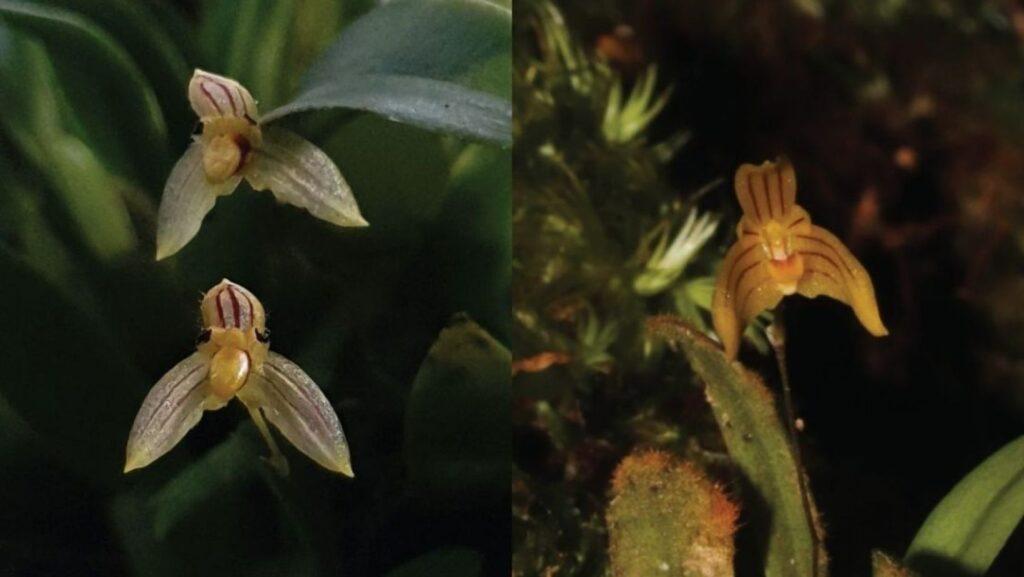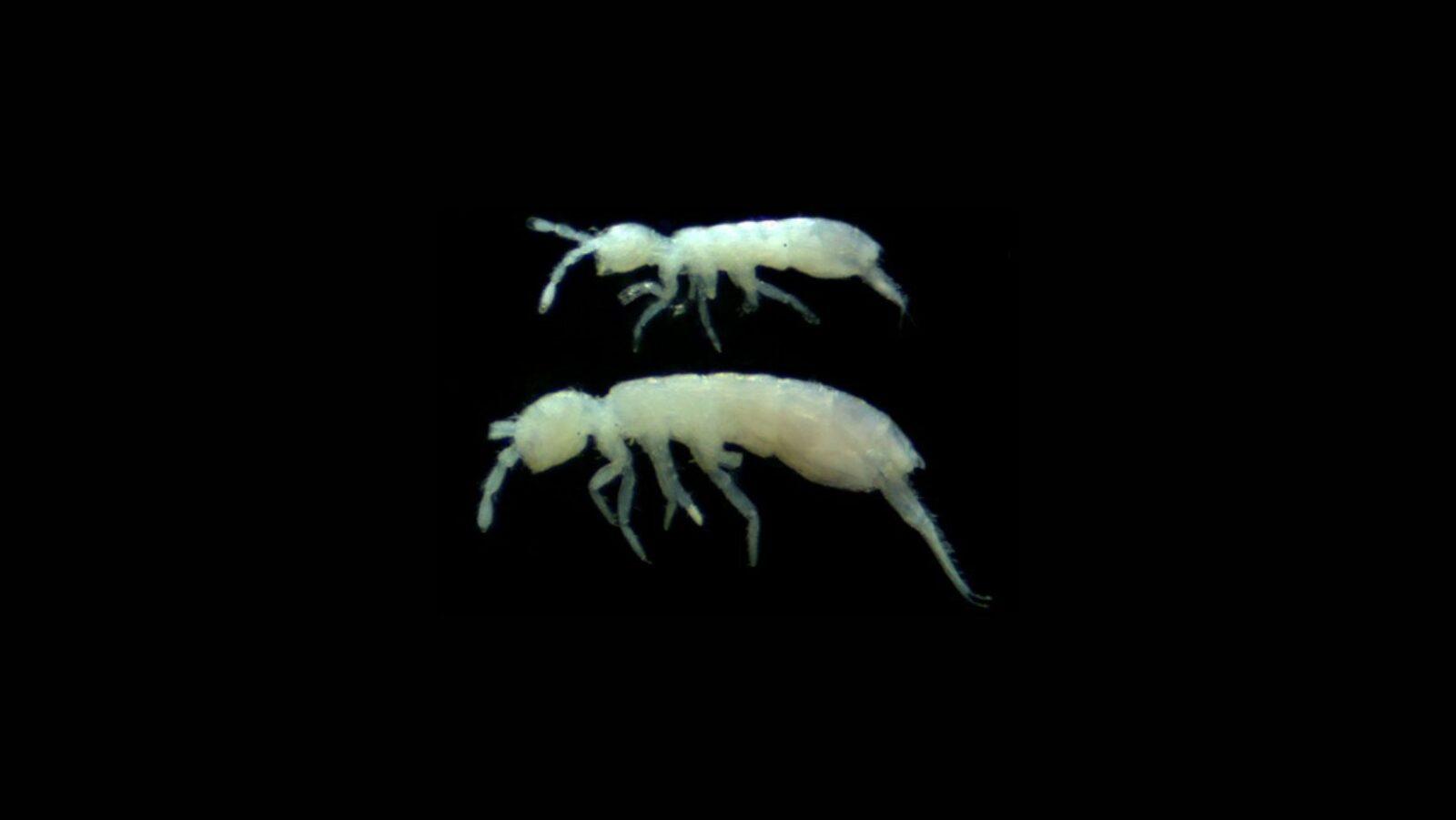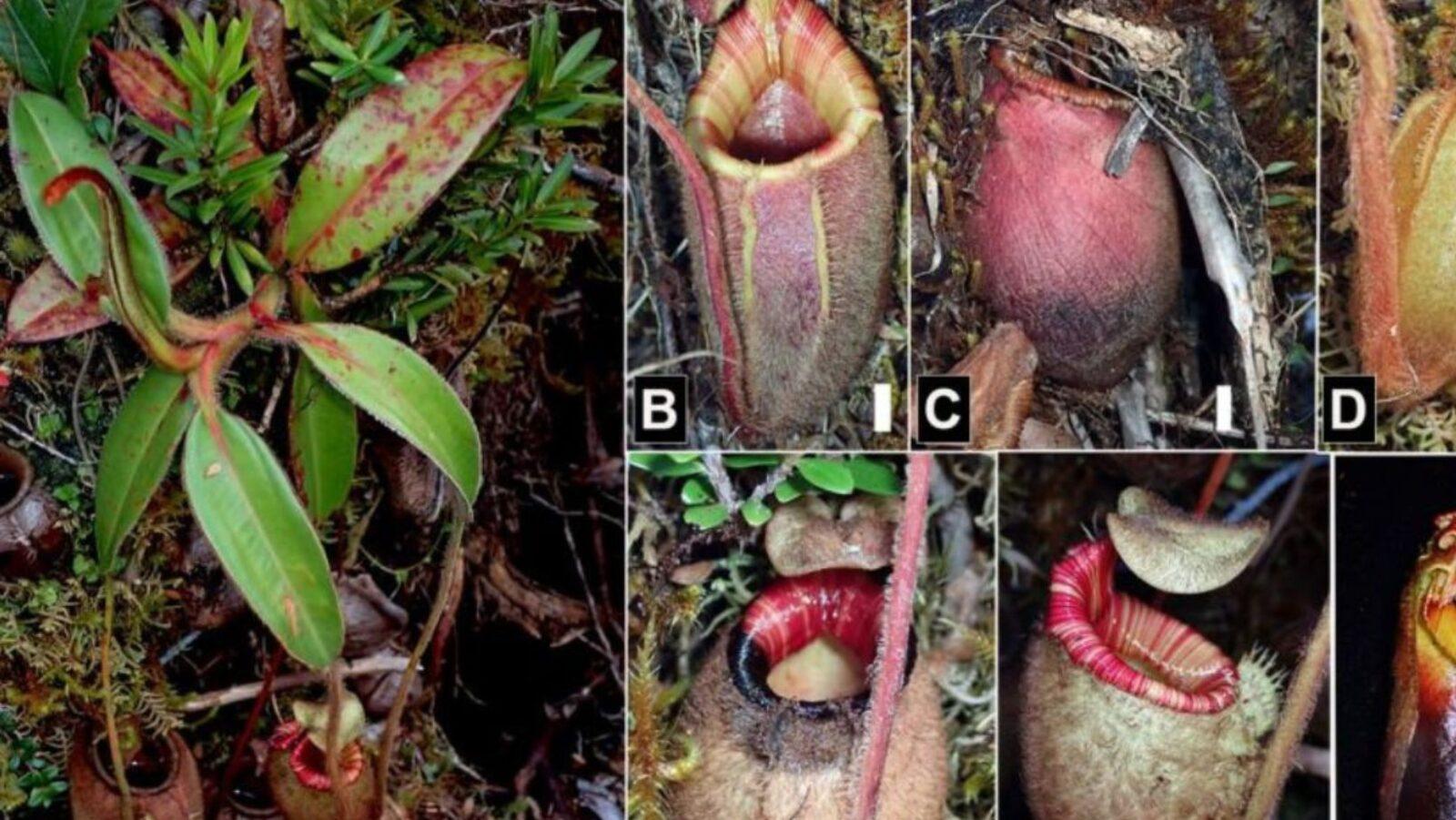
In January 2024, the Philippine Taxonomic Initiative announced the publication of two new species descriptions from the Philippines in the Nordic Journal of Botany.
𝘽𝙪𝙡𝙗𝙤𝙥𝙝𝙮𝙡𝙡𝙪𝙢 𝙗𝙖𝙧𝙘𝙚𝙡𝙤𝙣𝙖𝙚
Distribution/habitat: Mossy forest areas of the Pantabangan–Carranglan Watershed Forest Reserve, Sitio Binbin, Carranglan, Nueva Ecija, Luzon (holotype discovered in 2021)
Endemic: Yes
Distinctive traits: 𝘉. 𝘣𝘢𝘳𝘤𝘦𝘭𝘰𝘯𝘢𝘦 resembles another native flower, 𝘉. 𝘤𝘩𝘢𝘳𝘪𝘴𝘢𝘦, but differs by having smaller vegetative parts, egg-shaped petals with a rounded tip, a labellum with two ridges that are strongly angled outwards the adaxial (upper) surface, rounded crests that are proximal (closer to the point of attachment), and a grooved lower surface. The species flowers in February, March, October and November, and fruits in February and November. When in full bloom, 𝘉. 𝘣𝘢𝘳𝘤𝘦𝘭𝘰𝘯𝘢𝘦’s flowers produce a woody scent; they open during daytime, and typically survive between 2 and 7 days.
Conservation status: Data deficient (DD)
Described by: Abigail Garrino & Raab Bustamante
Etymology: Named after Dr. Julie Barcelona, a pteridologist (expert on ferns and related plants), Rafflesia expert, and administrator/editor of Co’s Digital Flora of the Philippines.
𝘽𝙪𝙡𝙗𝙤𝙥𝙝𝙮𝙡𝙡𝙪𝙢 𝙥𝙚𝙡𝙨𝙚𝙧𝙞
Distribution/habitat: Mossy forest areas of the Pantabangan–Carranglan Watershed Forest Reserve, Sitio Binbin, Carranglan, Nueva Ecija, Luzon (holotype discovered in 2021)
Endemic: Yes
Distinctive traits: Thriving in moist, humid areas in mid-elevation forests, 𝘉. 𝘱𝘦𝘭𝘴𝘦𝘳𝘪 resembles another orchid, 𝘉. 𝘢𝘶𝘳𝘦𝘰𝘣𝘳𝘶𝘯𝘯𝘦𝘶𝘮, but with notable differences (including shorter leaves marked with small spots and pseudobulbs with sheaths that are shed early on). 𝘉. 𝘱𝘦𝘭𝘴𝘦𝘳𝘪’s flowers bloom and fruit from October to November.
Conservation status: Data deficient (DD)
Described by: Jayson Mansibang & Raab Bustamante
Etymology: Named after Dr. Pieter Pelser, a biologist specializing in plant systematics, senior Lecturer at the School of Biological Sciences of University of Canterbury (Christchurch, New Zealand), and administrator/editor of Co’s Digital Flora of the Philippines.
Significance
With the discovery and description of 𝘉. 𝘣𝘢𝘳𝘤𝘦𝘭𝘰𝘯𝘢𝘦 and 𝘉. 𝘱𝘦𝘭𝘴𝘦𝘳𝘪, the number of known Bulbophyllum species in the Philippines has increased to 207. In addition to emphasizing the need for further fieldwork and research in protected areas of the Philippines, the two new species highlight the critical, ongoing threats of illegal logging, land conversion, illegal wildlife trading, and poaching in the country—happening even in forest reserves such as the Pantabangan–Carranglan Watershed—as well as the devastating effects of climate change and deforestation on all species, especially those that are new to science.—MF
Reference:
Garrino, A.L., Mansibang, J.A., Ann M. Aumentado, J., Pin Ang, Y., Udasco, L.C., Jr, Marie Diego, J., Charles Altomonte, J., Tamayo, M.N., Magtoto, L.M. and Anton Bustamante, R.A. (2024), Two new species of Bulbophyllum (Orchidaceae, sect. Polymeres) from Pantabangan-Carranglan Watershed Forest Reserve, Luzon Island, Philippines. Nordic Journal of Botany, 2024: e04187. https://doi.org/10.1111/njb.04187
Author: Mikael Angelo Francisco
Bitten by the science writing bug, Mikael has years of writing and editorial experience under his belt. As the editor-in-chief of FlipScience, Mikael has sworn to help make science more fun and interesting for geeky readers and casual audiences alike.









